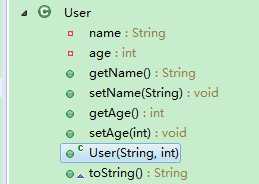标签:returns class src ide 完全 java8新特性 stream 接下来 方式
碰到List去重的问题,除了遍历去重,我们常常想到利用Set集合不允许重复元素的特点,通过List和Set互转,来去掉重复元素。
// 遍历后判断赋给另一个list集合,保持原来顺序 public static void ridRepeat1(List<String> list) { System.out.println("list = [" + list + "]"); List<String> listNew = new ArrayList<String>(); for (String str : list) { if (!listNew.contains(str)) { listNew.add(str); } } System.out.println("listNew = [" + listNew + "]"); } // set集合去重,保持原来顺序 public static void ridRepeat2(List<String> list) { System.out.println("list = [" + list + "]"); List<String> listNew = new ArrayList<String>(); Set set = new HashSet(); for (String str : list) { if (set.add(str)) { listNew.add(str); } } System.out.println("listNew = [" + listNew + "]"); } // Set去重 由于Set的无序性,不会保持原来顺序 public static void ridRepeat3(List<String> list) { System.out.println("list = [" + list + "]"); Set set = new HashSet(); List<String> listNew = new ArrayList<String>(); set.addAll(list); listNew.addAll(set); System.out.println("listNew = [" + listNew + "]"); } // Set去重(将ridRepeat3方法缩减为一行) 无序 public static void ridRepeat4(List<String> list) { System.out.println("list = [" + list + "]"); List<String> listNew = new ArrayList<String>(new HashSet(list)); System.out.println("listNew = [" + listNew + "]"); } // Set去重并保持原先顺序的两种方法 public static void ridRepeat5(List<String> list) { System.out.println("list = [" + list + "]"); List<String> listNew = new ArrayList<String>(new TreeSet<String>(list)); List<String> listNew2 = new ArrayList<String>(new LinkedHashSet<String>(list)); System.out.println("listNew = [" + listNew + "]"); System.out.println("listNew2 = [" + listNew2 + "]"); }
除此之外,可以利用java8的stream来实现去重
//利用java8的stream去重 List uniqueList = list.stream().distinct().collect(Collectors.toList()); System.out.println(uniqueList.toString());
上面的方法在List元素为基本数据类型及String类型时是可以的,但是如果List集合元素为对象,却不会奏效
public class ObjectRidRepeat { public static void main(String[] args) { List<User> userList = new ArrayList<User>(); userList.add(new User("小黄",10)); userList.add(new User("小红",23)); userList.add(new User("小黄",78)); userList.add(new User("小黄",10)); //使用HashSet,无序 Set<User> userSet = new HashSet<User>(); userSet.addAll(userList); System.out.println(userSet); //使用LinkedHashSet,有序 List<User> listNew = new ArrayList<User>(new LinkedHashSet(userList)); System.out.println(listNew.toString()); } }
User类结构如下:

输出如下:(没有去重)

解决对象去重,可以利用for循环遍历的方式进行判断去重,但今天我不准备探究这种方法,要使用的是如下两种:
//根据name属性去重 List<User> unique1 = userList.stream().collect( collectingAndThen( toCollection(() -> new TreeSet<>(comparing(User::getName))), ArrayList::new)); System.out.println(unique1.toString()); //根据name,age属性去重 List<User> unique2 = userList.stream().collect( collectingAndThen( toCollection(() -> new TreeSet<>(comparing(o -> o.getName() + ";" + o.getAge()))), ArrayList::new) ); System.out.println(unique2.toString());
输出如下:

在User类中重写equals()方法和hashCode()方法:
//重写equals方法 @Override public boolean equals(Object obj) { User user = (User) obj; return name.equals(user.getName()) && (age==user.getAge()); } //重写hashCode方法 @Override public int hashCode() { String str = name + age; return str.hashCode(); }
当再次执行通过Set去重的方法时,输出如下:

通过最具代表的的String中的equals()方法和hashCode()方法源码来探究两个方法的实现
/** * Compares this string to the specified object. The result is {@code * true} if and only if the argument is not {@code null} and is a {@code * String} object that represents the same sequence of characters as this * object. * * @param anObject * The object to compare this {@code String} against * * @return {@code true} if the given object represents a {@code String} * equivalent to this string, {@code false} otherwise * * @see #compareTo(String) * @see #equalsIgnoreCase(String) */ public boolean equals(Object anObject) { if (this == anObject) { return true; } if (anObject instanceof String) { String anotherString = (String)anObject; int n = value.length; if (n == anotherString.value.length) { char v1[] = value; char v2[] = anotherString.value; int i = 0; while (n-- != 0) { if (v1[i] != v2[i]) return false; i++; } return true; } } return false; }
比较两个对象时,首先先去判断两个对象是否具有相同的地址,如果是同一个对象的引用,则直接放回true;如果地址不一样,则证明不是引用同一个对象,接下来就是挨个去比较两个字符串对象的内容是否一致,完全相等返回true,否则false。
/** * Returns a hash code for this string. The hash code for a * {@code String} object is computed as * <blockquote><pre> * s[0]*31^(n-1) + s[1]*31^(n-2) + ... + s[n-1] * </pre></blockquote> * using {@code int} arithmetic, where {@code s[i]} is the * <i>i</i>th character of the string, {@code n} is the length of * the string, and {@code ^} indicates exponentiation. * (The hash value of the empty string is zero.) * * @return a hash code value for this object. */ public int hashCode() { int h = hash; if (h == 0 && value.length > 0) { char val[] = value; for (int i = 0; i < value.length; i++) { h = 31 * h + val[i]; } hash = h; } return h; }
当equals方法被重写时,通常有必要重写 hashCode 方法,以维护 hashCode 方法的常规协定,该协定声明相等对象必须具有相等的哈希码。
根据《Effective Java》第二版的第九条:覆盖equals时总要覆盖hashCode 中的内容,总结如下:
《Java编程思想》中也有类似总结:
设计hashCode()时最重要的因素就是:无论何时,对同一个对象调用hashCode()都应该产生同样的值。如果在讲一个对象用put()添加进HashMap时产生一个hashCdoe值,而用get()取出时却产生了另一个hashCode值,那么就无法获取该对象了。所以如果你的hashCode方法依赖于对象中易变的数据,用户就要当心了,因为此数据发生变化时,hashCode()方法就会生成一个不同的散列码。
List集合去重的一些方法(常规遍历、Set去重、java8 stream去重、重写equals和hashCode方法)
标签:returns class src ide 完全 java8新特性 stream 接下来 方式
原文地址:https://www.cnblogs.com/zjfjava/p/9897650.html